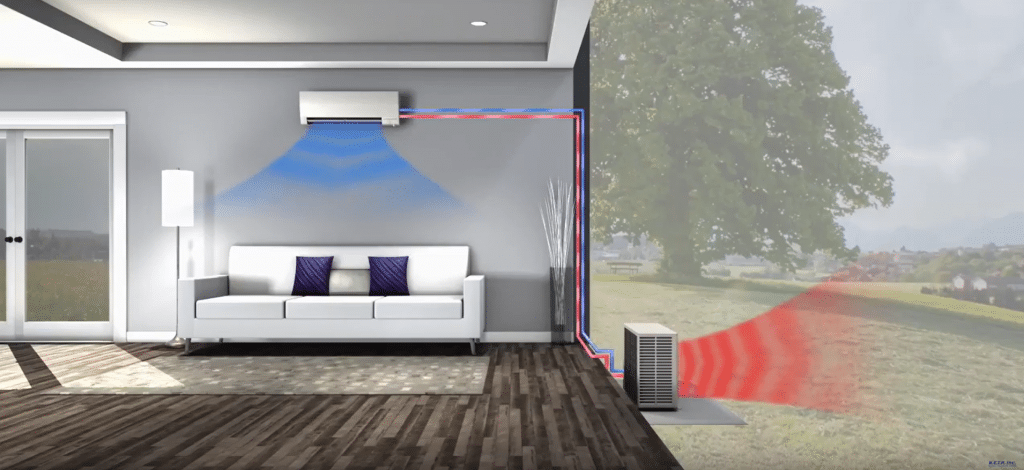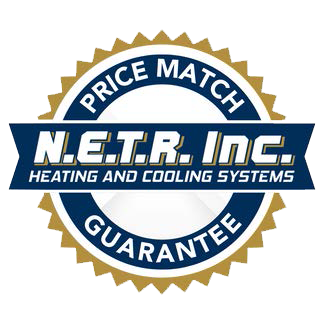At N.E.T.R., Inc. we get a lot of questions about ductless heating and cooling systems. To help you get a sense of the essentials, we’ve put together this look at the basics of these systems. Welcome to ductless 101.

The Components
Ductless units consist of a handful of basic components. Just like a traditional air conditioner, they have an outdoor unit. They also have one or more indoor air handling units. A conduit runs between these two unit and it holds a tube with refrigerant, electrical wires, and a drain for condensate. Finally, these units have remote controls, so you can adjust the settings, and they may also connect to software that lets you control the system.
Depending on your needs, you may have a single outdoor unit with a single indoor unit. That’s perfect if you’re trying to cool an addition, an attic, or a part of your home that isn’t connected to your existing HVAC system. Alternatively, you may have one outdoor unit with multiple indoor units. A single outdoor unit can support a few dozen indoor air handling units, but for very large multi-unit commercial buildings or apartment blocks, you may need multiple outdoor units.
How Ductless Systems Work
To cool down a space, the indoor unit takes warm air from your home or office. As the warm air passes over the cold evaporator coils inside the unit, the refrigerant in the coils absorbs the heat. Then, the refrigerant travels through the piping to the outdoor unit. There, it releases the excess heat, and the refrigerant cools down. Then, the cooled refrigerant travels back to the indoor unit. As air blows over the cool refrigerant, it becomes cool, and that cool air blows into your space to cool it down.
During the winter, this process happens in reverse, engaging the heat pump capabilities of the unit. In both cases, the systems use variable speed compressors which adjust the temperature as needed. As a result, the system doesn’t cycle on and off, and that helps you avoid the uncomfortable highs and lows associated with many central HVAC systems.
The Installation Process
Installation of ductless units is very straight forward. A ductless professional helps you assess the number of indoor units you need and the right capacity for your outdoor unit. Then, they install the outdoor unit, drill small holes in the walls to run the lines through, and connect the indoor unit. For a small residential job, this project often can be completed in half a day or less, and even for a large commercial job, installation is relatively quick. For a multi-unit installation, you can opt to have the installation work done zone by zone. For instance, you can do a floor of your building every week until the entire system is installed, or you can install ductless units where they are needed immediately and then install the units in other areas as desired.
Best Locations for Ductless Systems
Also called mini splits, ductless heating and cooling systems work in a variety of locations including the following:
- Additions
- Attics
- Basements
- Entire Homes
- Office Buildings
- Retail Spaces
- Data Centers
- Gyms
- Restaurants
- Multi-Unit Commercial Buildings
- Apartment Buildings
- And More
Essentially, ductless heating and cooling units can work in nearly any residential or commercial space. They can also work in both temperate climates as well as in areas with relatively cold winters.
Zoned Heating Cooling
You can control each of the indoor air handling units connected to your ductless heating and cooling system separately. Thanks to programmable controls, you can setup the system so that it automatically adjusts to meet your changing needs throughout the day. For instance, most people don’t need the home as warm when they’re at work or sleeping, and that helps to save money on heating and cooling costs. However, if you want to override the programmed settings, you can also alter the settings on each unit separately using your remote control.
With extensive commercial systems, your ductless unit comes with software. You can control each individual unit with the software, or you can set parameters and allow the people near each unit to specify the exact temps they want. You can also sync this software with your building management software so that you can control everything from a central dashboard. With both residential and commercial systems, you can connect the controls to an app for accessibility on the go.
Efficiency Considerations
Thanks to zoned heating and cooling, ductless systems are instantly more efficient than traditional HVAC systems because you don’t have to heat or cool areas that aren’t in use. You also never have to overheat or cool one area just to keep another area comfortable. With traditional HVAC systems, you often end up with areas that feel too cold or too warm because all the rooms are connected to a single thermostat.
Ductless units are also designed to be more efficient, and they meet ENERGY STAR guidelines. These features help to reduce your energy bills, and they also reduce your carbon footprint because you end up using less energy. Additionally, if you have a ducted system, you always lose some hot or cold air through the ducts, and that drives up your overall energy usage and costs. Simply removing the ducts makes these units more efficient.
Have questions? Ready to learn more? Curious about installing a ductless heating and cooling system in your home? Contact us today. At NETR, we have the experience and knowledge you need to make your home or commercial space more comfortable and more efficient.
